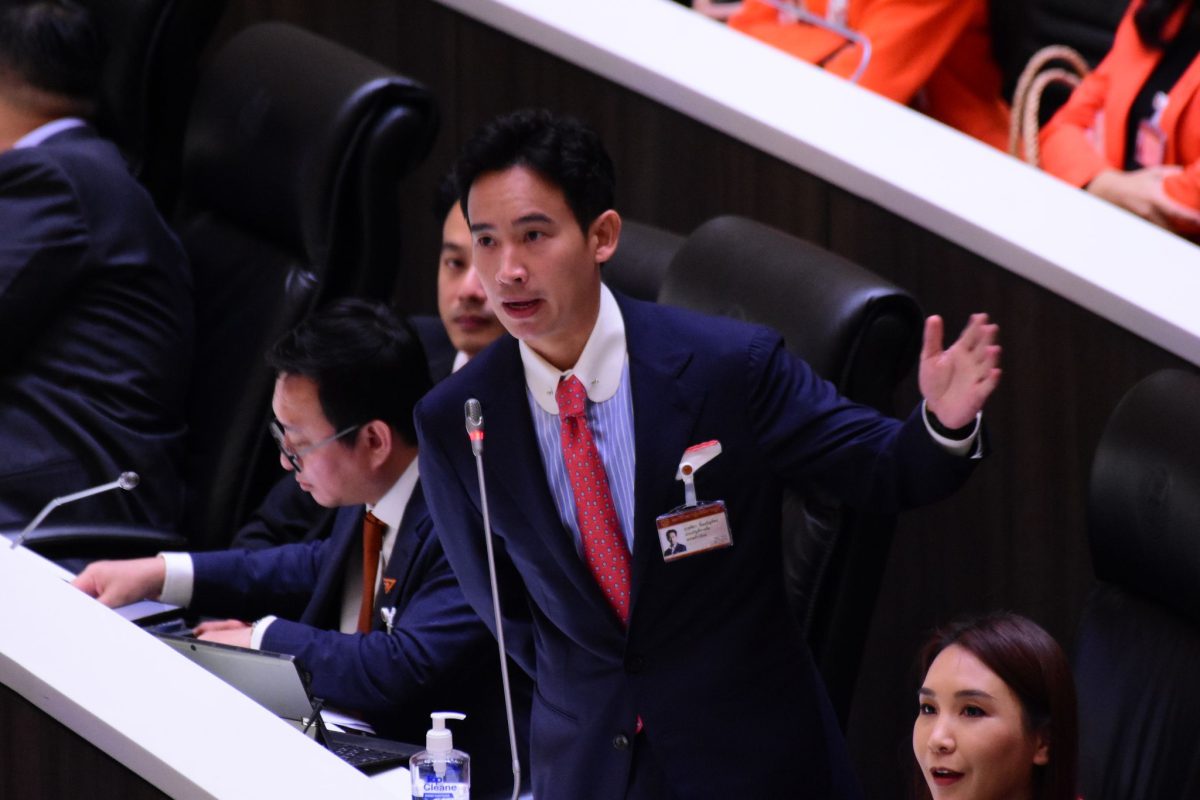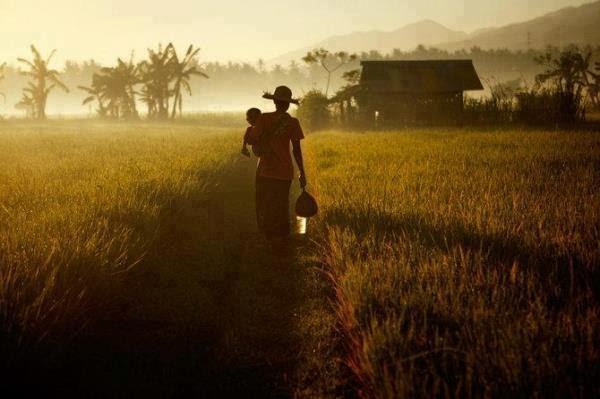Sisters of Isan displays Isan (the northeastern part of Thailand)’s value and their construction at the beginning of the 20th century together with Thailand as a modern state. The book has recorded the stories of two sisters growing up and working from the countryside to Bangkok. At the same time, the book shows the perspectives of Isan people through their belief, lifestyle, culture, social norm, value and fate. This book covers the changes by over 50 years of Isan workers and Thailand. Hence, beyond two sisters who had shifted from rural to urban landscape, the stories inside reflect how Thai society has come. The struggle is not something Isan people choose, whereas, reading this book may imply the answer. Sisters of Isan is not just a book. This infers lives… the Isan’s lives.
While people today crave for nostalgia of the ‘90s, the province of Sisaket back then was one of the poorest cities similarly to the others in Isan. In those days, many people had to walk over 10 kilometers to reach the destination such as school, market, or hospital. Electricity was irregular, but coal was necessary. Life in Sisaket was something to not nostalgically dream of.
At the beginning of the story, the book first displays Phimpha’s occupation. He is a ritualistically spiritual healer who plays an important role in his community despite not graduating as a doctor. In the absence of supplementary welfare, rudimentary knowledge and animalism are a perfect combination for villagers. Extraordinarily for this time, he is not doing the regular delivery but his fourth child, the second daughter. She is bringing to the world. Her name is Pon.
Sisters of Isan, published at the end of last year by Australian writer Allan Beesey, is an apt record of the struggles of Isan women with inequality and their changing place in society. Its story reflects the reality of the past century through the lives of Pon and her older sister Ket, in both Sisaket and Bangkok.
The book is a time machine that explores the past half century of Isan up until the Covid-19 pandemic. Meanwhile changes have swept the Isaan, the book examines the struggles that have changed little for its people and its culture from life in the village to the buffaloes and dams that define it for outsiders.

The beginning of two sisters’ journey is colored by vivid cultural beliefs and portrayed their lifestyles through time. Subconsciously, their lifestyle relies on nature and living instinct. Food is in nature. The sun is an equipment telling time. Coal is a resource for hot water and lightness. More importantly, a spiritual person such as Phimpa is the most sophisticated reliability for this society.
“Karma is a cultural belief that good actions bring good outcomes.”, Allan Beesey clarifies the radical social dimensions of 2 sisters’ life, and it has become a moral of the story even for Thai people presently.
Pon has to leave home at 16 to work in Bangkok following Ket who had left before her sister. In Pon’s world, she could hardly conjure in her mind what a city is, just like the other in Isan. However, by the sense of living in a community that is completed by fruitful actions of animalism, Buddhism and Brahmin makes sense to Isan people to be not discouraged in their destiny. Suddenly, “Luk Thung” as known as song for life turns out trendy for the working class showing the class struggle of Isan and Lao in Thailand that has been increased as well as the migration to Bangkok. Similarly, it is the reflection of economic growth that comes with Cold War.
Besides portraying lives of the working class in a constructional metropolis like Bangkok, the main city of Thailand, Sister of Isan captures Sisaket’s roots among the Khmer and Lao as well as other marginal provinces. Thailand and the Siamese are something unfamiliar to them, and life in the village is far from what is generally considered Thainess through all the years. Therefore, during this period, the national policies have centralized. Noticeably, Bangkok means the angel city in which it refers to central Thai people.
The only public policy in which Isan people are used to being with is a barrier constructed that is adversely a barrier for villagers life. Their perspective of government is somebody who brings them dams to the land of Isan where it is perceived as an arid region in government’s eyes. Rasi Salai Dam is an exacerbated example. This dam escalates more flooding and drought. Villagers have learned by their experiences that public policy could not provide quality of life.
It is the same thing why Isan parents would have five to six children on average, not including adoption or miscarriages. The lack of stability requires them to be collective. Kinship shares obligingness. Children share ensurement that they could meet the needs of lives based on agriculture and hunting. Hence, the only obvious alternative to find a better life is Bangkok. Pon and Ket’s decision is a bitter-sweet reason. They hope to have a better life by only working in Bangkok.
At the same period, Thailand’s industry and the economy grow and give rise to a middle class. Bangkok has become a center for north and northeast (Isan) people. They leave the rural area to make a new struggle in Bangkok. This divide is told through Ket, who helps support Pon. As an older sister, she takes care of her siblings for over 10 years after going to work as a maid in the metropolis.
The Two Sisters’ Fate, The Isan People’ Lives
The way people believe reflects the way people behave traditionally. Two sisters stand under the same religious umbrella as well as other Thais. Bangkok somehow becomes a better place for them to live with less conditions. However, after working in industry for four years, Pon returns home to marry her school lover. It is not successful. Before long, she marries Pong, a man she meets at the factory where she works, which is also her social outlet. Five years later, Eve is introduced to the world by Pon and Pong.
Eve is now becoming the first generation of modern society. She was born in a hospital, not in a house like her mother. Two months later, her lovely parents have to be back working at the factory. Pong is a good father and a lucky husband for Pon. He does not smoke or drink alcohol unlike a typical Isan man. Then, one day Pon wakes up at the usual time only to find Pong’s motionless body. He has become yet another young man to fall victim to Sudden Unexplained Nocturnal Death Syndrome, or SUNDS, an all-too-common malady in Thailand, especially among Isaan men.
The phenomenon is not coming to the end for Isan people, yet the case of death of many adult men once blamed ‘Widow Ghost’ (Phi Mae Mai). As a result, many men dress up as women before bedtime to trick the ghost to be misled and not bring their soul. Nevertheless, Pon now knows that working in the city with a reliable income is the only way her child can afford financial security, and returning to work is her burden of loss and grief…
The story told by Sisters of Isan is too short to be concluded. The lives of Pon and Ket will be the witness of how Thailand constructed itself during the early 20th century until nowadays. Isan, the poorest region but wealthiest cultural tradition, is still challenging for the post-modern world like many countries in Southeast Asia. Presently, Isan workers do experience the health of Bangkok for the beginning of the era and now if they are working in the informal sector in markets, street sellers, domestic works, as well as taxi, motorcycle rider and construction workers.
The moral of the story mainly shows the value of an Asian family. Likewise, Pon and Ket believe in their families and their obligations. That underscores how life, family, and kin underpin Isan values. Beyond illustrating Isan’s collectivist culture, the book may increase understanding of how modern Thai history has been marked by disruption and popular uprisings in response to a growing chasm in class inequality and political differences.





